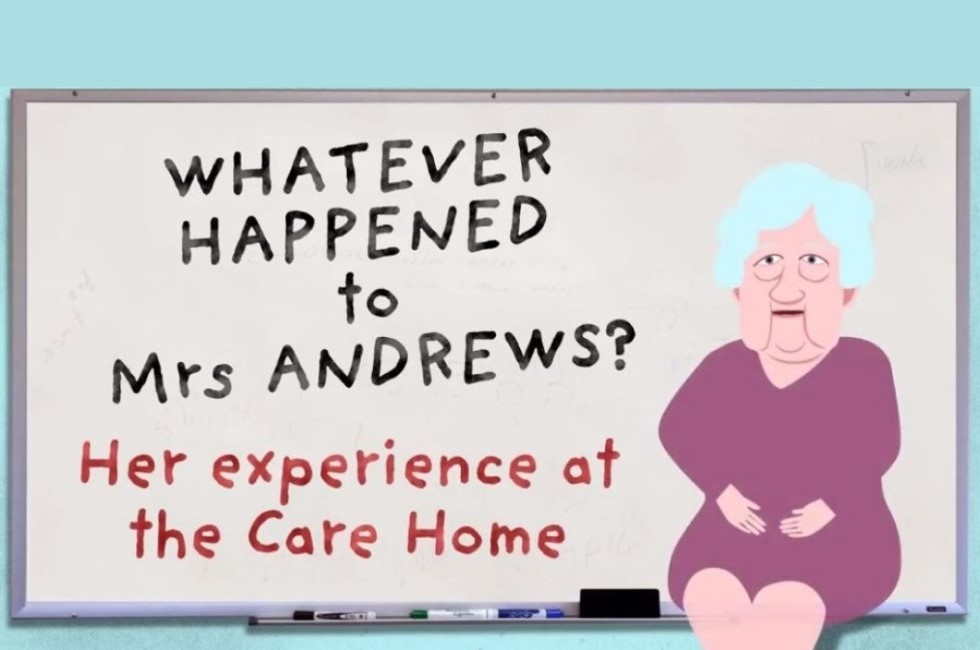In the latest news from the suite of work which makes up our Older People’s Care Improvement Initiative, Professor Adam Gordon, who led the Proactive Health Care of Older People in Care Homes (PEACH) study, reflects on an oft-repeated tale…and shows that there IS a different way…
Adam Gordon is Professor of the Care of Older People at the University of Nottingham. He tweets @adamgordon1978
The story of Mrs Andrews’ disastrous admission to acute hospital has become a staple of presenters who want to convey the challenges of delivering frailty-attuned care in the modern NHS. I often use the video for talks or teaching.
One of my regrets, however, was the way that Mrs Andrews’ story ended with her in a care home. “She never returned home again,” almost seemed to be saying that “all hope was lost”. This always felt wrong to me. It is true that, for many people in Britain, care homes remain a residence of last resort. But in my time as a community geriatrician and care home researcher, I’ve been convinced about the positive difference that care homes can make to the lives of older people. Recently I was privileged to participate in the 30th anniversary celebrations at Wren Hall Nursing Home, in Selston, Nottinghamshire. It was a celebration of a community of staff, residents and their families, and the daily positive differences they make to each others’ lives. It was uplifting.
There is evidence that when healthcare professionals work with care home staff in a co-ordinated way, they can improve outcomes for residents.
As part of the Dunhill Medical Trust’s Proactive Healthcare in Care Homes (PEACH) study, we were given the opportunity to conduct an in-depth realist review of the literature on Comprehensive Geriatric Assessment in care homes – now published. This gave us some fresh insights into the opportunities and challenges when delivering comprehensive, multidisciplinary care in care homes.
We wanted to consider how the things we had learned through PEACH could make a difference, and we thought this would be a great opportunity for us to help Mrs Andrews finish her story on a more upbeat note. We wanted a version of events where the care home staff, and the healthcare staff working with them, helped make things better.
Our sequel, “Whatever Happened to Mrs Andrews?” is now available. Things to watch out for include:
- the pivotal role played by care home staff in initial assessment and coordinating care
- the importance of healthcare professionals being directly accessible to care home staff
- the asynchronous ways in which the assessments take place
- the scheduled opportunity for focused multidisciplinary discussion at virtual ward rounds
- the way that care home staff and visiting professionals work together to structure care plans and observe how Mrs Andrews responds
- the availability of specialist falls and dementia care to care home residents
- the way in which advanced care plans, inappropriate at admission due to delirium, are revisited by various members of the multidisciplinary team, later in the stay.
Work from the PEACH study continues. Our next set of publications will focus on how Quality Improvement Collaboratives can help to deliver comprehensive multidisciplinary care in care homes. The protocol for that work is already published.
Meanwhile, though, we’re content to have given Mrs Andrews a happy ending to her story. One that acknowledges the potential for excellent care homes, and excellent health care in care homes, to improve the lives of older people.

